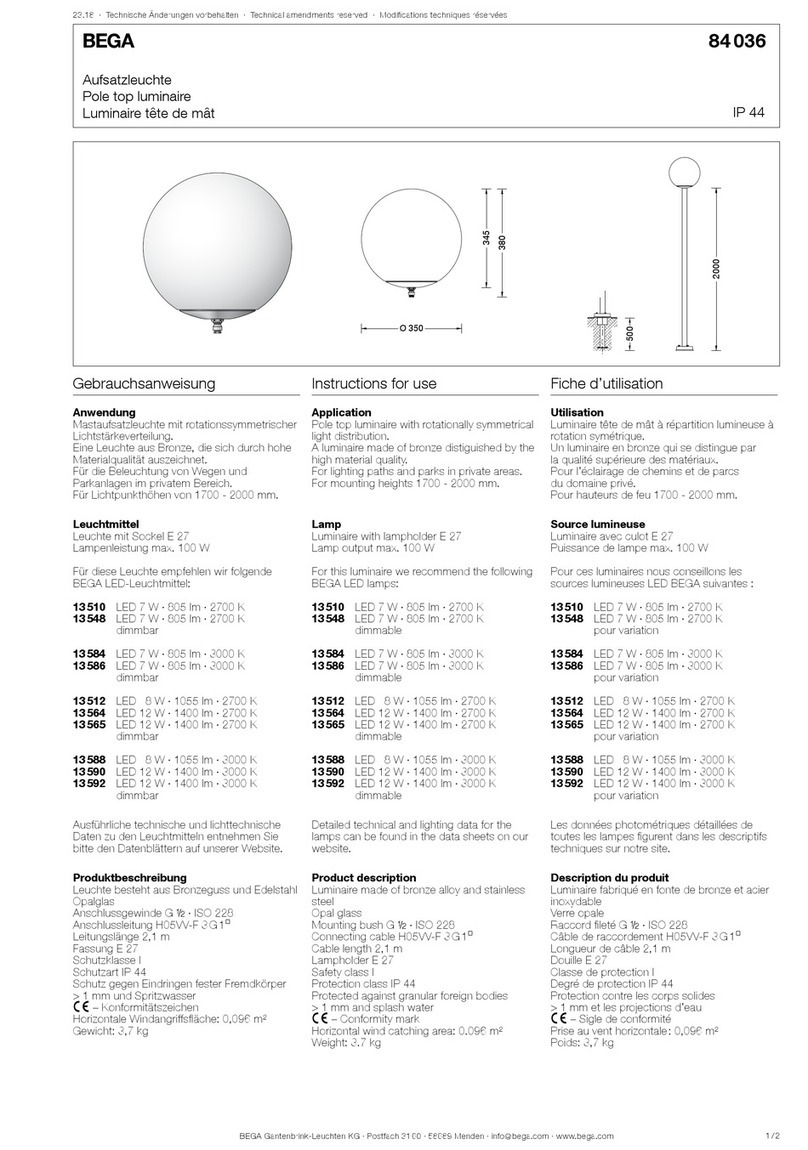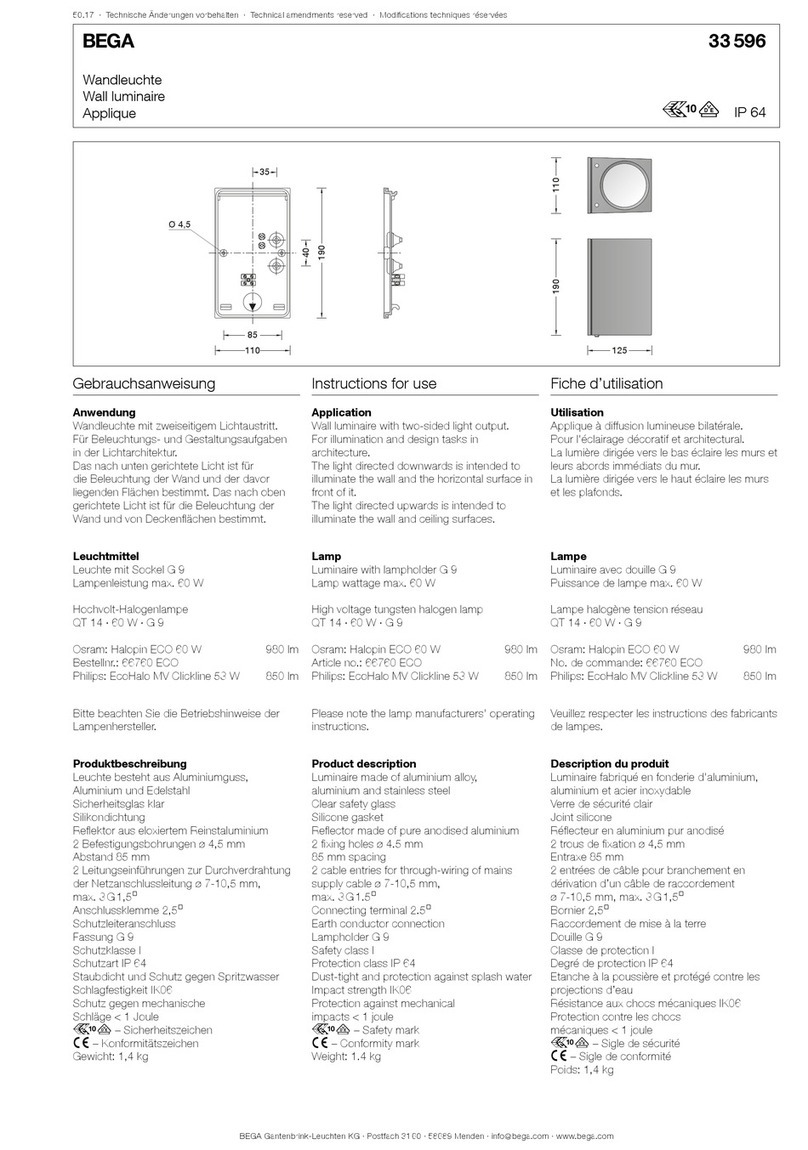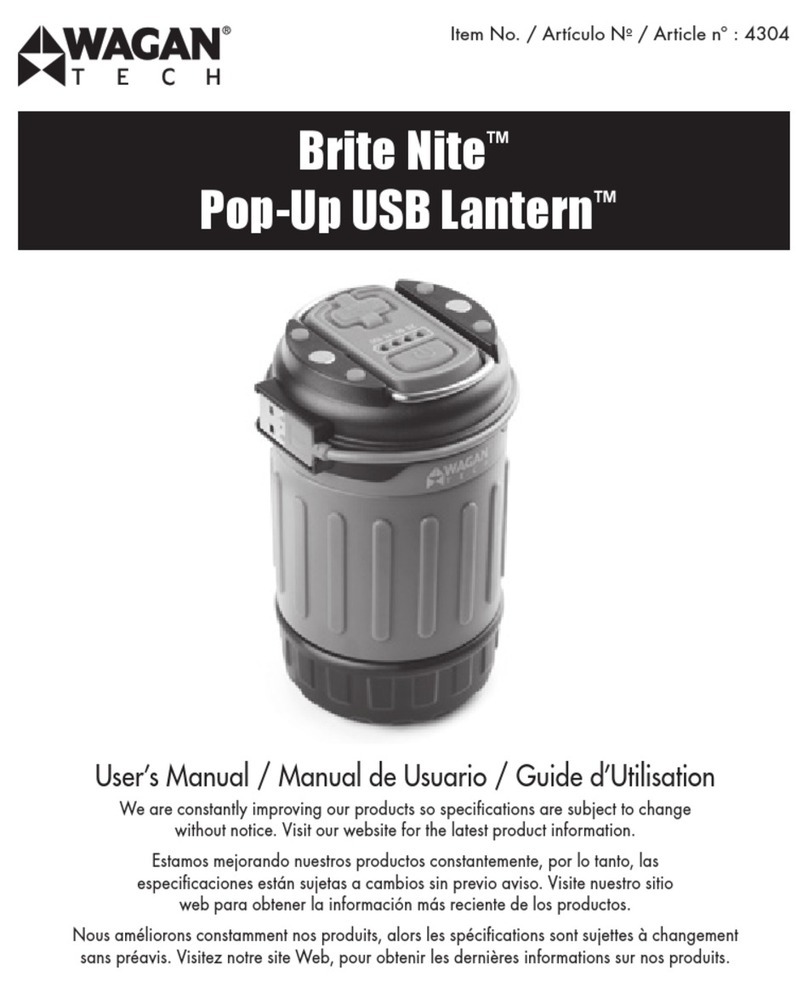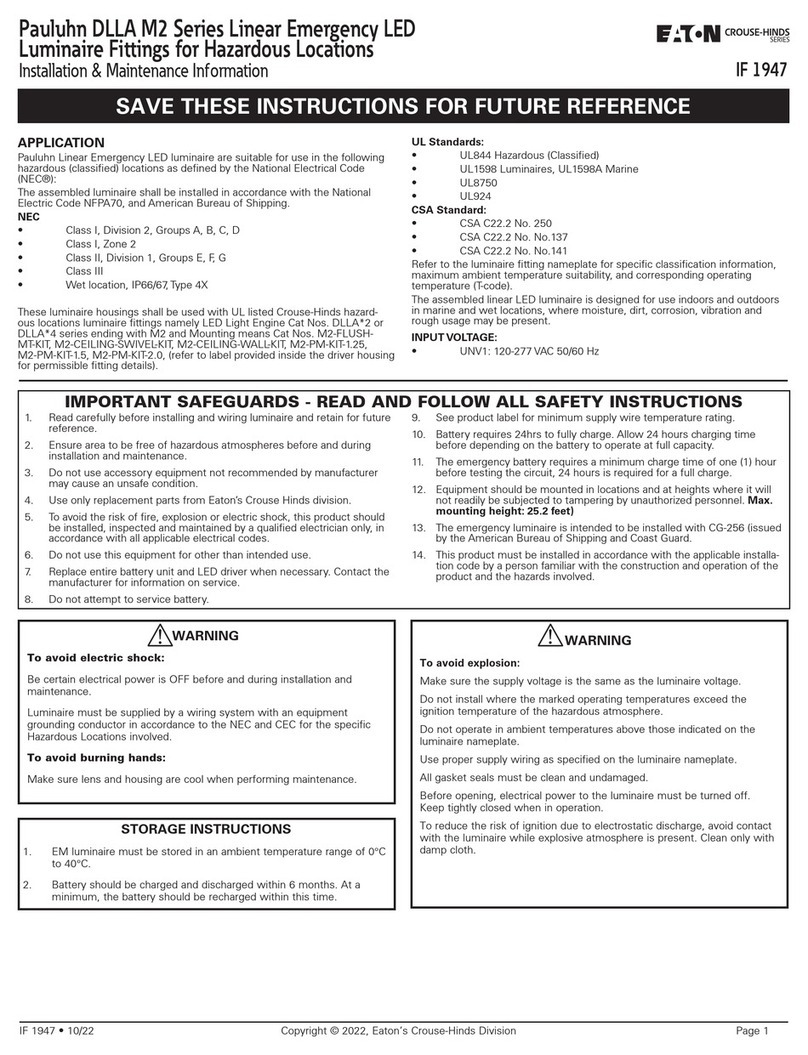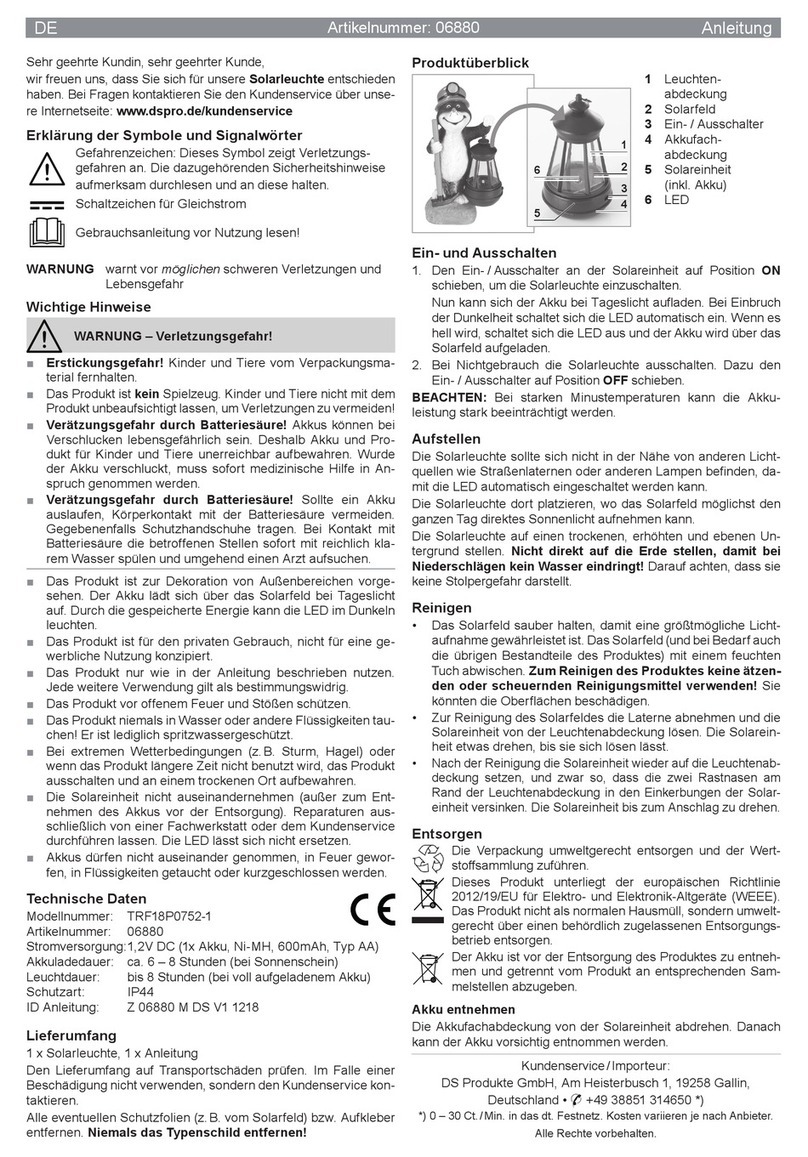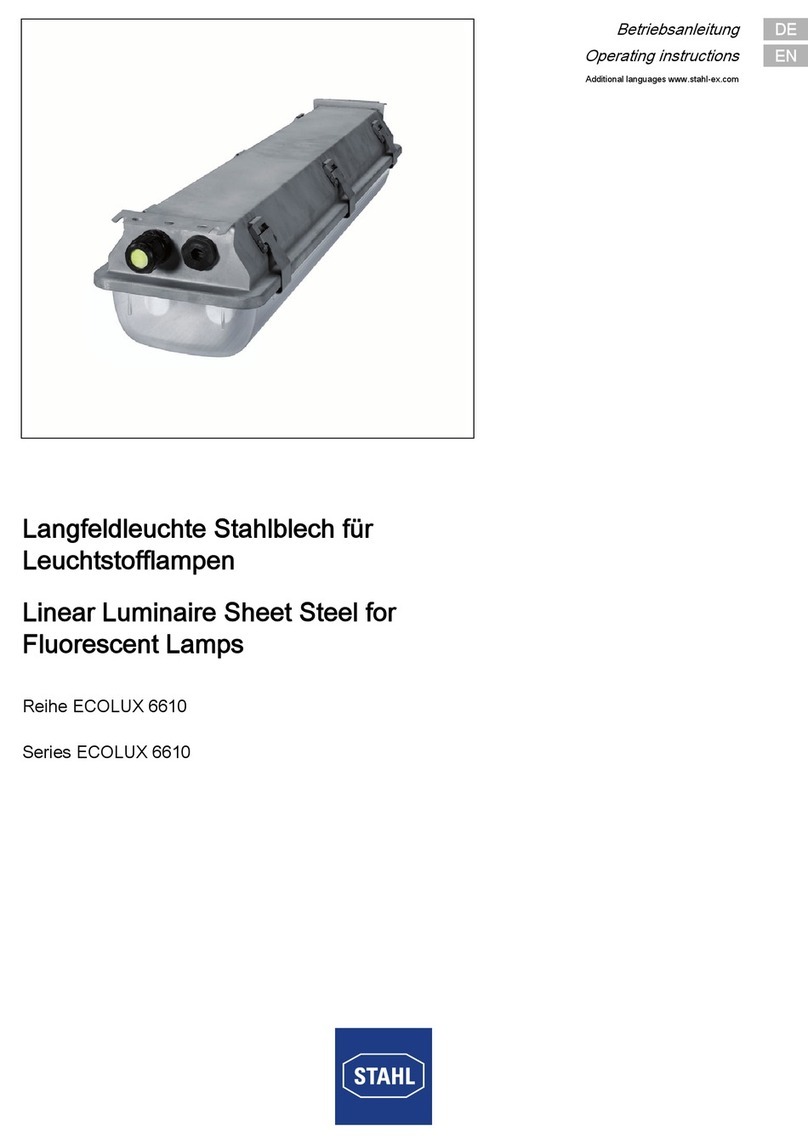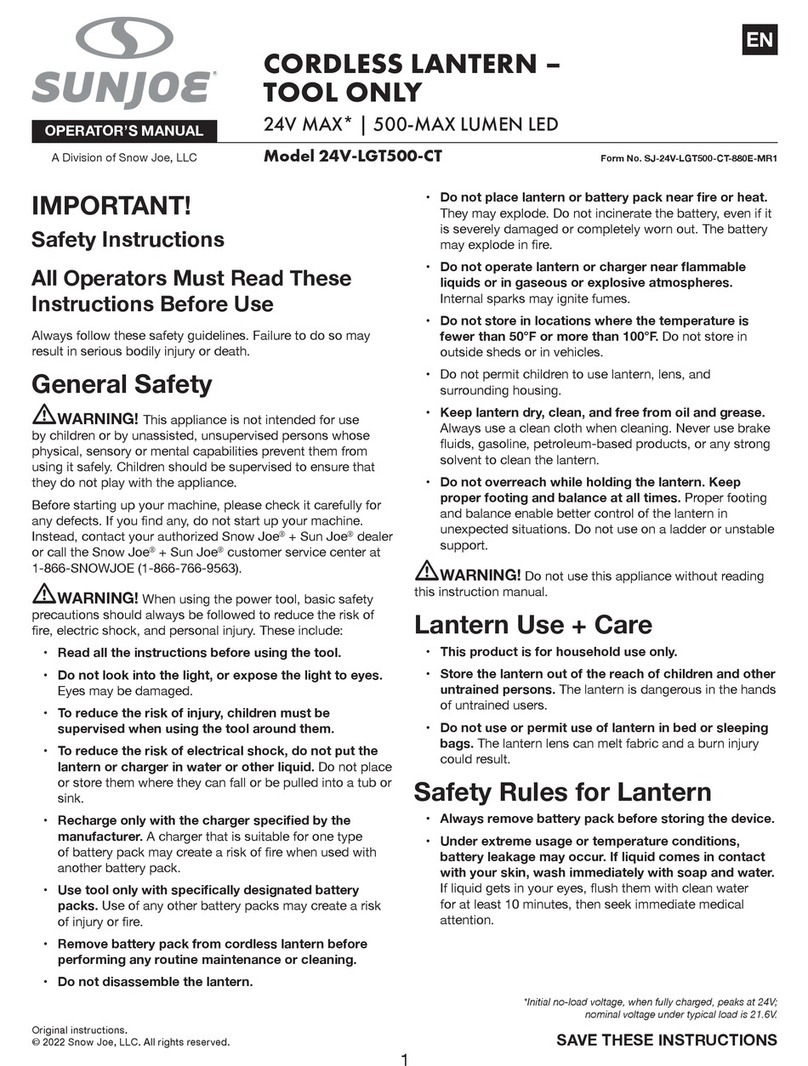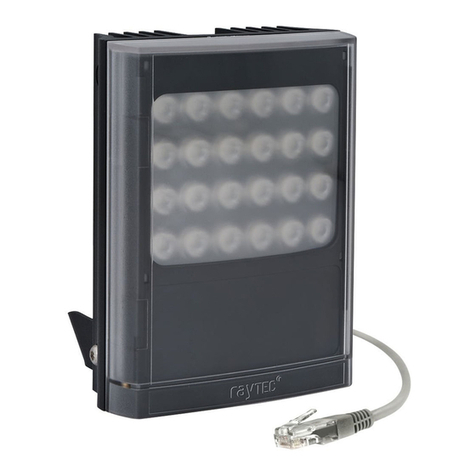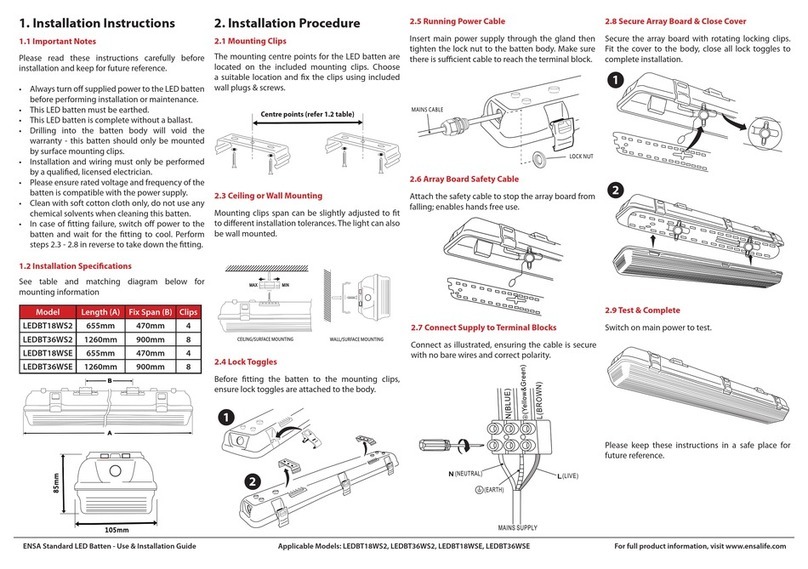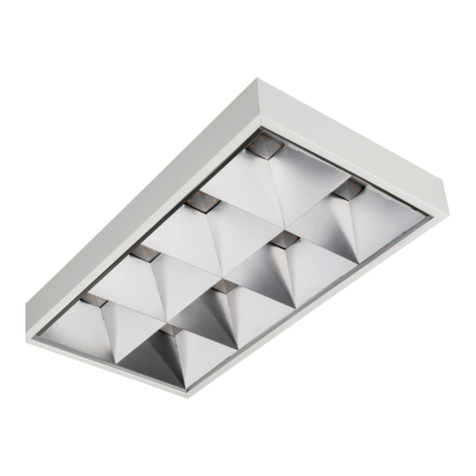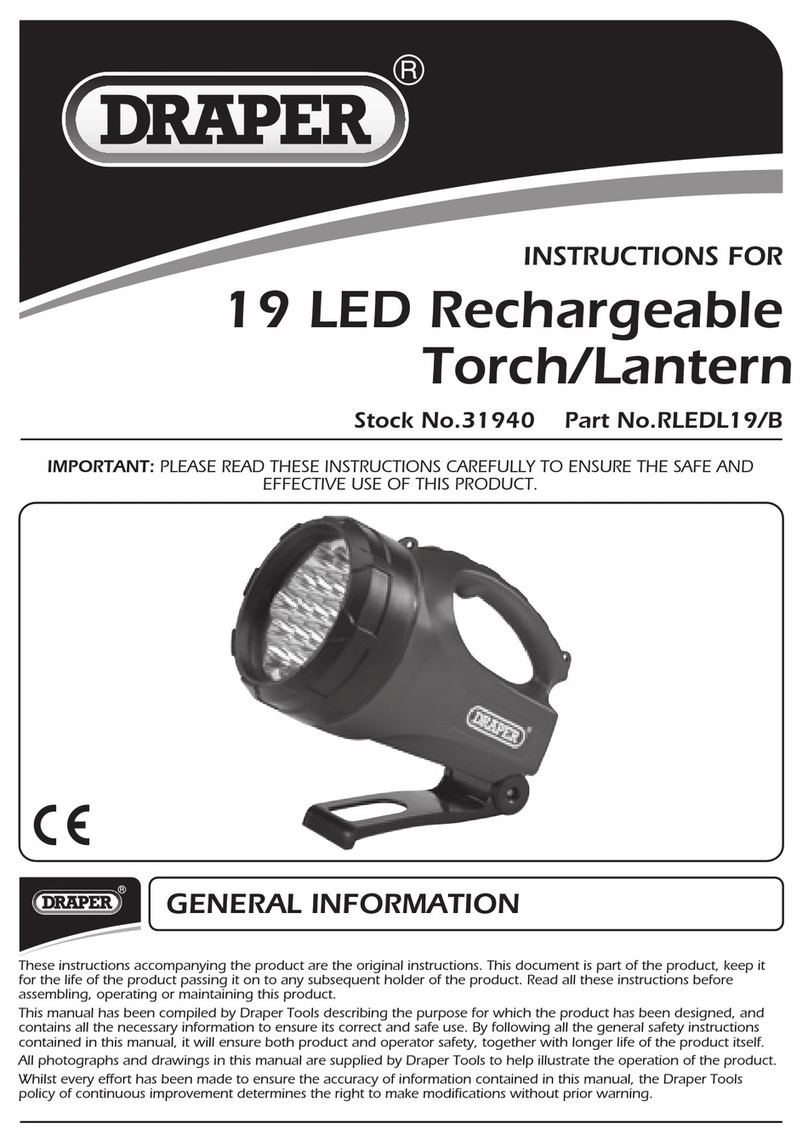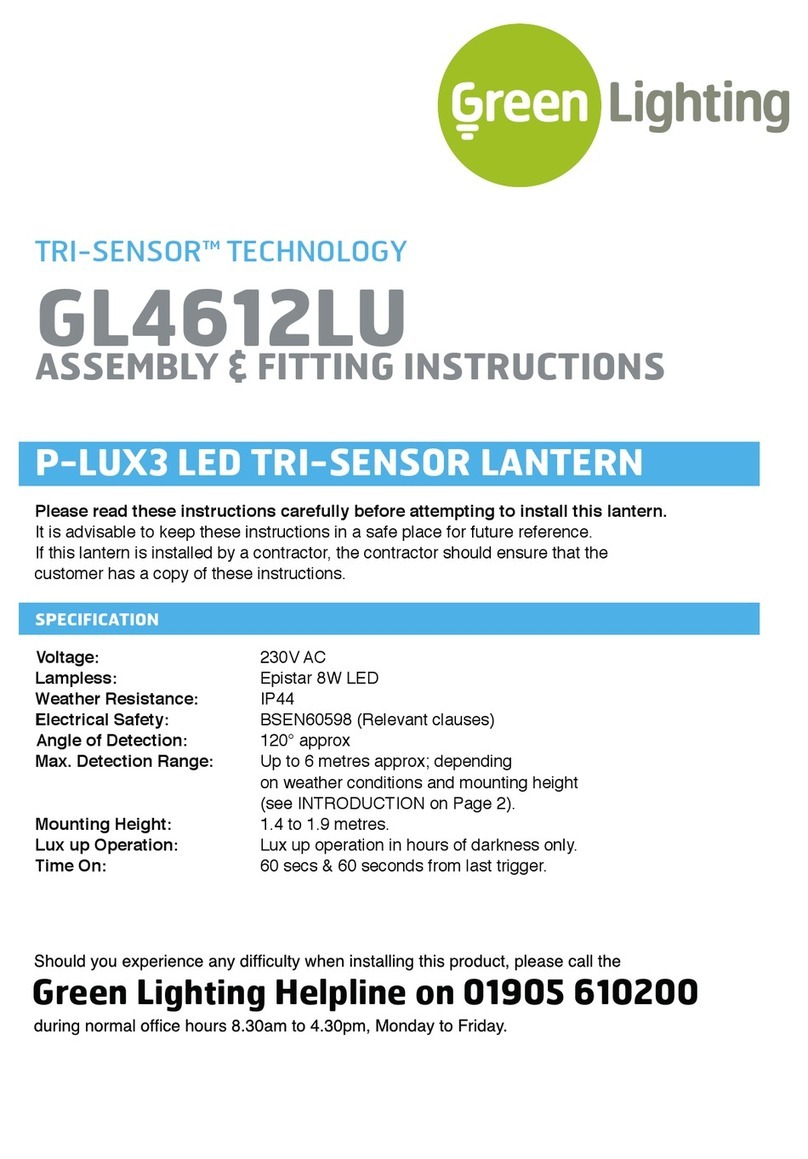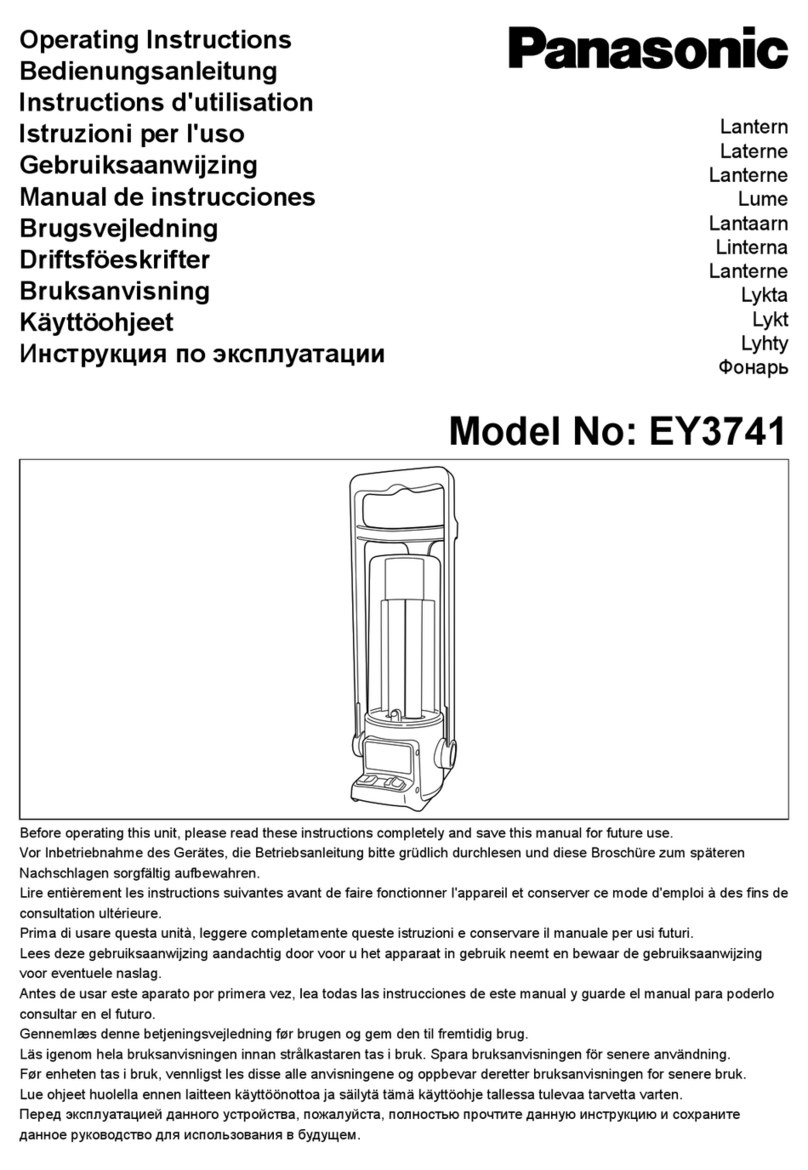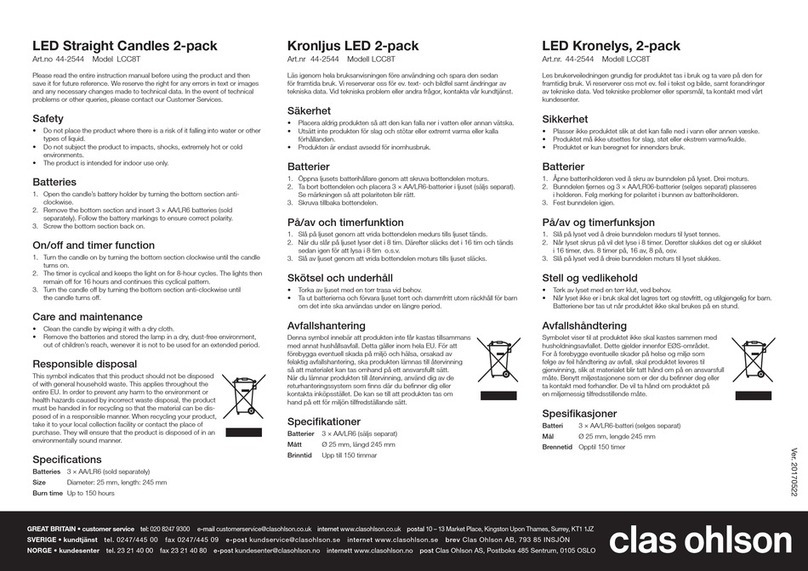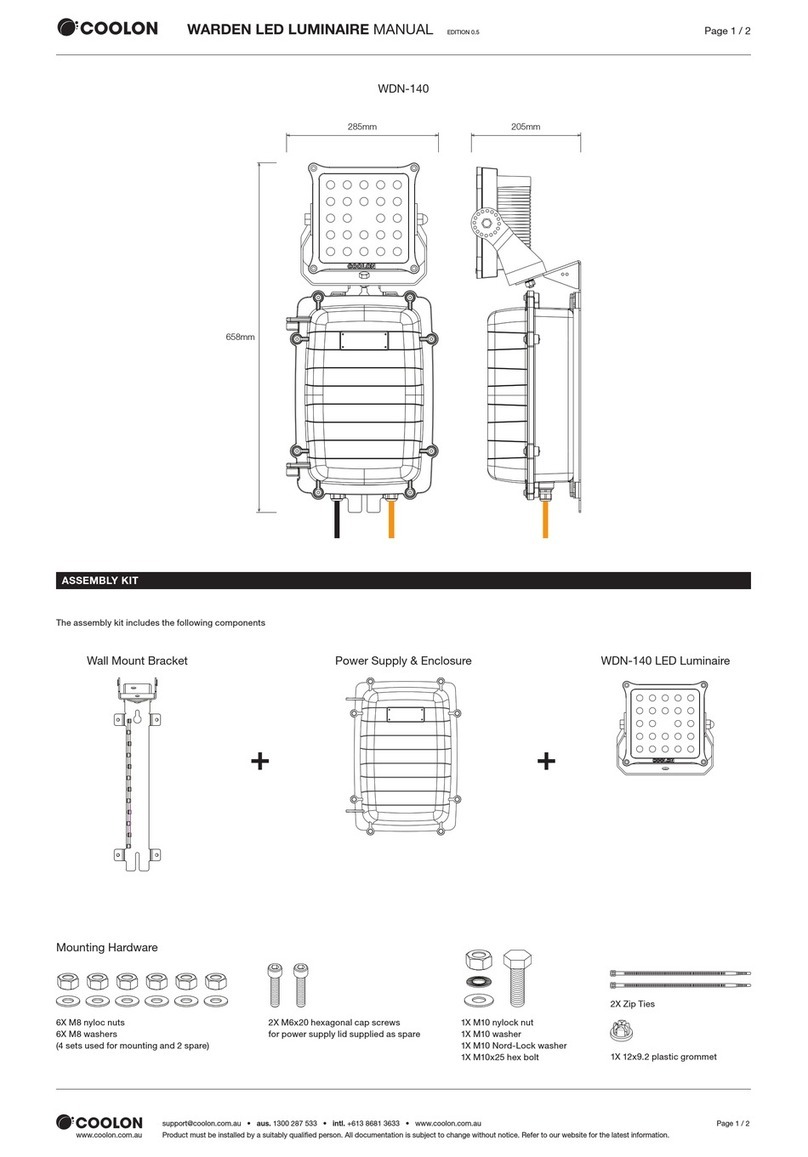
9
3.To shorten the range, use the lens
masks provided or tilt the sensor
down to reduce coverage.
4. Repeat step #2 until you are
satisfied with the coverage.
5.The Time Control is factory set
between 5-8 minutes.This period
starts after the movement in the
Detection Zone ceases.If less time
is desired, turn the time control
counterclockwise. For more time,
turn the control clockwise.
6.The sensor is factory set for night
only operation.To obtain operation in
low level light, turn the Photocell
Control full clockwise to the sun
symbol. Intermediate settings will
allow the sensor to operate earlier or
later at dusk.
7.Your sensor is ready for operation.
See the Technical Tips pages if
additional help is needed.
Control Panel:
Turn controls gently using adjust-
ment tool provided.Do not force past
stops.
Aiming and Walk Testing
Sensitivity Time Control
Photocell
Test Period:
The sensor has a 3 minute Test
Period which allows it to be aimed
and walk tested day or night.
• For the first 30 seconds, the lights
will be turned on. During this time,
test that all fixtures and lamps
function properly.
• For the next 3 minutes, the sensor
will keep lights on for 5 seconds
each time it detects movement in its
Detection Zone.The sensor will
change to Automatic Mode after the
3 minute test period.
• If another 3 minute Test Period is
desired, turn the power off for at
least 10 seconds and back on again.
Walk Test:
The purpose of the Walk Test is to
check and adjust the coverage
pattern.
1. Aim the sensor approximately to
cover the area you desire.
2. Start outside the Detection Zone
and walk across the zone until the
lights go on. As distance from the
sensor increases, it will take more
movement to be detected. For
instance, at 10 feet, a half step will
be enough. while at 30 feet, several
steps will be necessary.
Technical Tips:
Lights Do Not Turn Off
1. Make sure sensor is not aimed at
something that would move or
change temperature such as waving
branches, water, air conditioners,
windows or heating vents - even on
neighboring property.You can test for
infrared sources in the area by placing
a box or bag over the sensor. Put
sensor into Test Mode. After the initial
30 seconds of the lights being on,
lights should stay off.Wave your hand
inside the bag in front of sensor.
Lights should go on and then time
out. If sensor operates properly when
covered, check items 2-6.
Problem: Sensor is triggered by
unwanted movement or heat source.
Solution: Mask lens in the direction of
the source.Move sensor or source.
2.Make sure sensor is mounted firmly
and does not move even slightly
when touched. If it moves, tighten all
screws.
3. Make sure that SmartLantern is
not mounted to an unstable surface
that may move in the wind.
4.Was sensor wired hot? If so,
circuitry may have been damaged.
5. Make sure sensor is not aimed
within 30 feet of a road.
Problem:Passing cars activate sensor.
Solution: A 30’safety zone between
the sensor and road is recommended
to avoid activation from passing cars.
You may also mask top of sensor
lens to reduce range or simply rotate
sensor so it is not aimed in the direc-
tion of the street.
6. Make sure heat from lights is not
triggering sensor.Make sure the
sensor is below and as far as possible
away from lights.
7. Hi/Lo Models only:
Remember
that the lights will stay on in low
mode at 20% wattage from dusk to
dawn.This is normal operation.If the
Photocell Control is turned to the
sun symbol, the lights will stay on in
low mode in low level light and night.
If you desire low mode from dusk
until dawn only, turn the Photocell
Control fully counter clockwise to the
moon symbol.
Tips 1-6 above apply only if the
lights are staying on in high full
wattage mode.
Branches
blowing
may
activate
sensor
10

